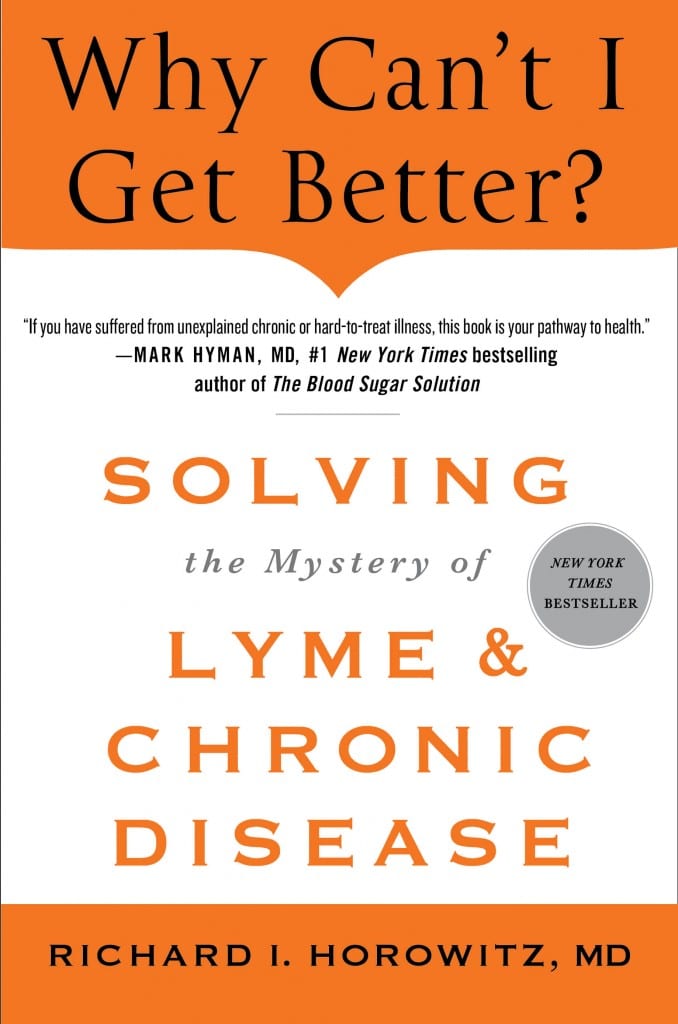Why Can’t I get Better? Solving the Mystery of Lyme and Chronic Disease
Reviewed By: Dorothy Kupcha Leland, LymeDisease.org
Dr. Richard Horowitz’s new book looks at pain, fatigue, memory and concentration problems, sleep disorders and much much more.
Lyme disease and its related conditions are incredibly complicated. Different patients can have completely different sets of symptoms. And treatments that work for some patients might not help others at all.
Through his years of working with more than 12,000 Lyme disease patients—many of whom had been sick for years and had failed many treatments before they even came to see him—Dr. Richard Horowitz has developed a new way of looking at the complex factors that embody this disease.
He doesn’t even call it “chronic Lyme.” Instead, he calls it “Lyme and MSIDS (multi-systemic infectious disease syndrome). Which is another way of saying that Lyme is only part of the picture.
Instead of looking for one answer to what is wrong with the patient, Horowitz says, doctors should be looking for many factors. Because, especially after someone has been sick a long time, there are usually a number of conditions contributing to their misery. He likens it to having 16 nails stuck in the bottom of your foot. Just pulling out one won’t fix your problem.
Thus, he has a “16-Point Differential Diagnostic Map” for evaluating chronically ill patients.
MSIDS: Overlapping factors contributing to chronic illness
- Lyme disease and coinfections
- Immune dysfunction
- Inflammation
- Environmental toxins
- Functional medicine abnormalities with nutritional deficiencies
- Mitochondrial dysfunction
- Endocrine abnormalities
- Neurodegenerative disorders
- Neuropsychiatric disorders
- Sleep disorders
- Autonomic nervous system dysfunction and POTS
- Allergies
- Gastrointestinal disorders
- Liver dysfunction
- Pain disorders/addiction
- Lack of exercise/deconditioning
In the case of people with Lyme and MSIDS, Horowitz explains, his “MD” actually stands for “Medical Detective.” Because it takes some digging to finally figure out what is keeping these patients from getting well. The investigation starts with a symptom questionnaire and a careful medical history for each patient.
You can take the questionnaire yourself, and start doing your own detective work with this book as your guide.
Horowitz illustrates his points with real life examples from his practice. A man who had worked in a chemical plant for many years, it turns out, had environmental toxins preventing his body from clearing Lyme disease. The woman with adrenal insufficiency would never get well until that problem was addressed. And food allergies were a serious obstacle for others.
The book is 532 pages long and gives detailed information about each of the 16 points. I’d especially draw your attention to his section about sleep problems and how to deal with them. Insomnia and disturbed sleep patterns are among the most common complaints I hear from Lyme patients.


















